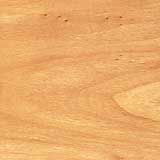|
Cottonwood is one of the softest hardwoods, more closely resembling Basswood than any other species. It is tougher and stiffer than Basswood and due to its interwoven fibers, it does not split very easily and is extremely wear-resistant for such a soft wood. It contains very few defects, is odorless and tasteless, has unusually uniform texture and works up fairly well. It is comparatively weak, decays quickly in contact with the ground, and has a tendency to warp in seasoning.
Due to the fact it is among the best woods for nailing, light weight, has a lack of odor, and a natural white color for printing, more than one-half of all Cottonwood lumber is used in the manufacture of boxes and crates. Its resilience and cleanliness also makes it a preferred material for excelsior. Large amounts of Cottonwood are cut into commercial veneer for utility type furniture and medium-priced furniture products, as well as drawer bottoms and back panels. Cottonwood is much used for food containers, such as baskets, fruit and berry boxes and candy barrels. Other factory specific uses include: vehicle parts, planning mill products, agricultural implements, laundry appliances, corestock, drawer stock, refrigerators, dairy appliances, and trunks. Cottonwood is a popular toy material because of its softness, light weight and lack of taste or odor. In some parts of the country, it is one of the principal fuel woods. It is most commonly finished in paint or enamel. It can be finished in standard stain base finishes where special treatments are employed to counteract its natural fuzzy grain characteristics. |

